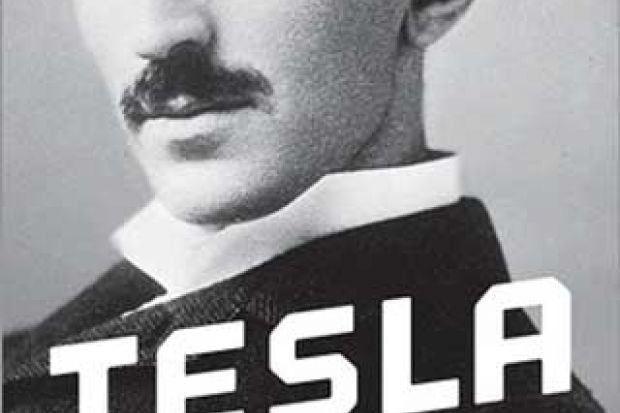The Terrestrial Axis Straightening Company, a visionary band of engineers and financiers hoping to improve Earth’s climate, met in New York’s exclusive Delmonico’s Restaurant in the 1890s. The company, depicted in a science fiction novel by Colonel John Jacob Astor IV, was fictional; the restaurant, real.
The crossover says something about the atmosphere of the time. There were great fortunes, a fascination with invention and a sense of infinite possibility as technology took wing. Astor, heir to $100 million and a small-time inventor himself, personified this strain in New York society. So did a fellow habitué of Delmonico’s, Nikola Tesla.
Well, except for the fortune. Tesla, as Bernard Carlson’s splendid biography notes, was mostly broke. But he combined vision with technical prowess like no one else. Astor, one of Tesla’s backers, enjoyed speculative fancies about future wonders - solar power, a global communications network, interplanetary travel. Tesla was striving to realise them.
He is famous partly because he succeeded, some of the time. The three- phase AC power grid on which we now rely, for example, came mainly from his work. But his fame also stemmed from self-promotion, a talent for spectacular demonstrations, and a stream of claims of more important inventions round the corner.
Today his reputation is hard to assess. His visionary aspect still attracts would-be emulators who reckon he really did have workable plans for wireless power transmission around the globe, or particle beam weapons. There are some decent biographies, but they sit alongside other books that, Carlson avers, “propagate many misleading ideas”. Unlike Edison or Marconi, Tesla never lent his name to a company that grew into a major manufacturer. He does, however, have the more enduring fame of a scientific unit, the tesla, defined as the unit of magnetic field strength in 1950.
Carlson, a historian of technology, covers the biographical side well. He is good on Tesla’s early life as the son of a Serbian priest in what is now Croatia, his studies in electrical engineering, early signs of his visionary tendencies, with occasional breakdowns through overwork, and his emigration to the US in 1884 to work for Edison. Carlson’s wider interest, though, is in the genesis of radical innovations. Both the man and his milieu shed light here. Tesla succeeded when he married his vision to painstaking lab work. He had extraordinary imaginative prowess and developed detailed mental images of his inventions. His problems mainly stemmed from committing to them even when the physical world did not yield the right results - most expensively in his effort to develop wireless power transmission while others were forging ahead with radio for communication.
He also had to manage his reputation to support his preferred strategy for exploitation - patenting his ideas, then selling the patents or licensing them. That left him free to move on to the next idea, but called for a hefty publicity effort to attract buyers. With AC motors and power systems, it worked, partly because he had partners who understood the interwoven systems of finance, patenting, licensing and patent litigation. It helped that there were innumerable start-ups and plenty of capital accumulated in real estate and railroads looking for new ventures. The fact that no one knew where new technologies using electricity and magnetism might lead, or quite what an electrical engineer was, while the press provided glowing reports of both, didn’t hurt. The comparisons with more recent high-tech innovation in IT or biotech are intriguing.
By 1905, when Tesla’s venture in power transmission ran out of cash, his popular appeal made him suspect to more sober professionals, and investors were growing wary. His promised future wonders were matched by successes from other hands, such as transatlantic wireless signals and X-rays (the latter a discovery he could have made, but missed). After one more breakdown, he lived on for nearly four decades, achieving little but still defending his visionary ideas. Reclusive and never married (Carlson notes close relationships with several men but says we will never know if they were consummated), Tesla became a dreamer rather than a doer. It is hard to judge how useful this study of Tesla’s career is for general insight into invention, but the long, sad coda to his career shows how, for him, the price of innovation was high.
Tesla: Inventor of the Electrical Age
By W. Bernard Carlson
Princeton University Press, 520pp, £19.95
ISBN 9780691057767
Published 29 May 2013
Register to continue
Why register?
- Registration is free and only takes a moment
- Once registered, you can read 3 articles a month
- Sign up for our newsletter
Subscribe
Or subscribe for unlimited access to:
- Unlimited access to news, views, insights & reviews
- Digital editions
- Digital access to THE’s university and college rankings analysis
Already registered or a current subscriber? Login




